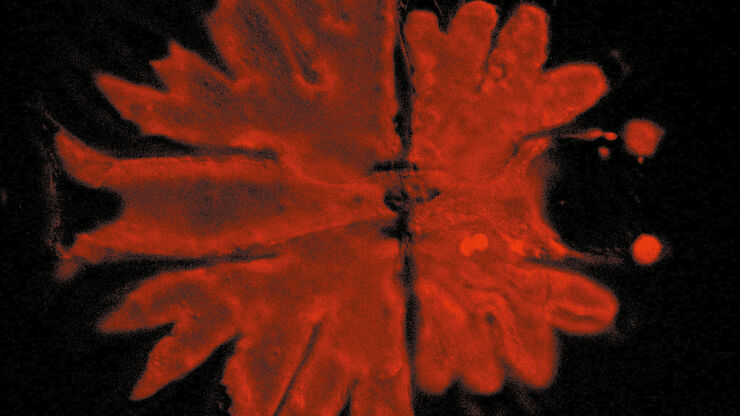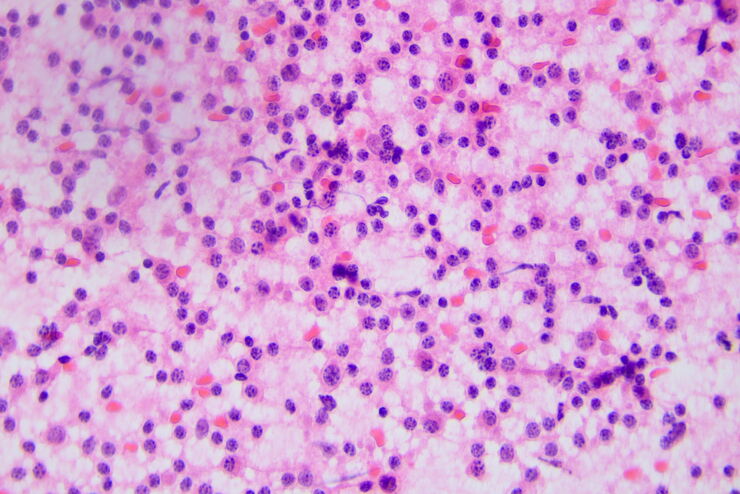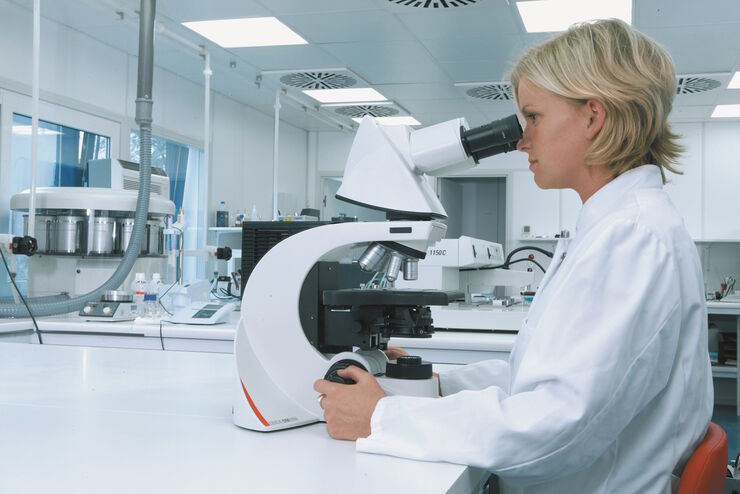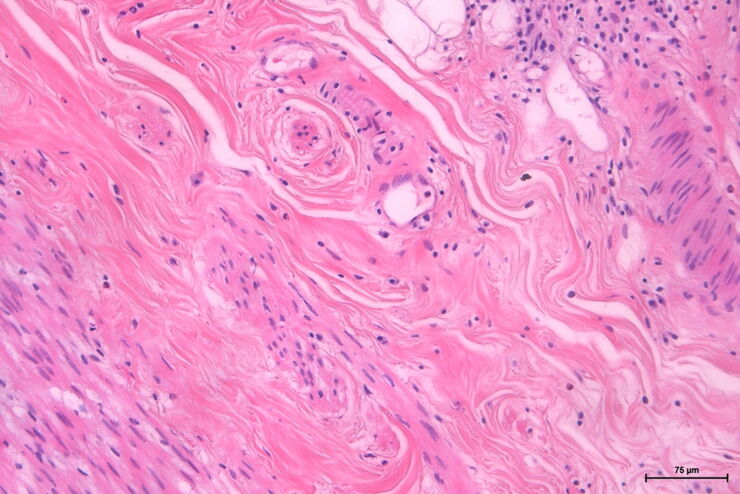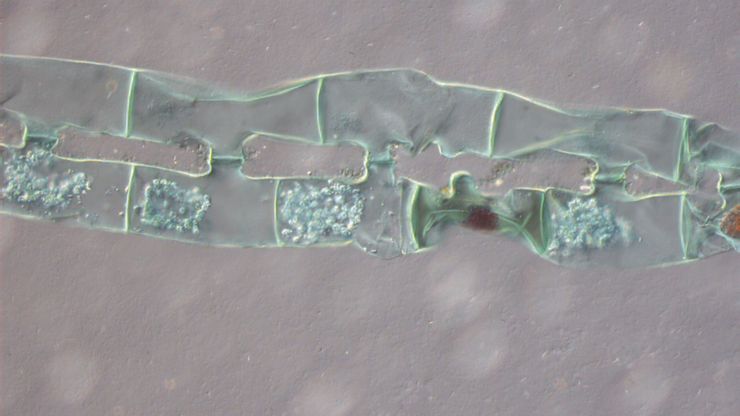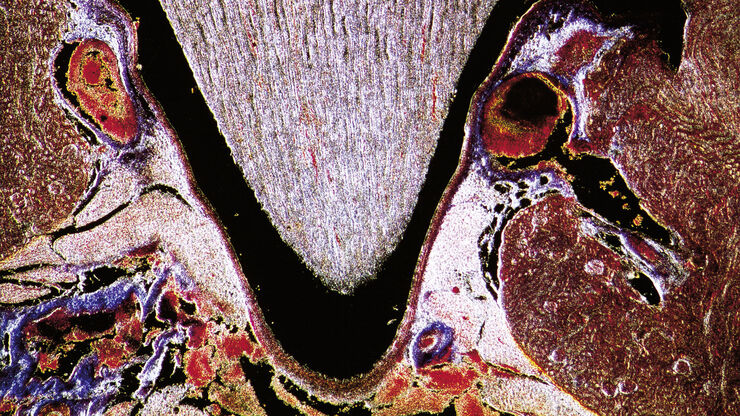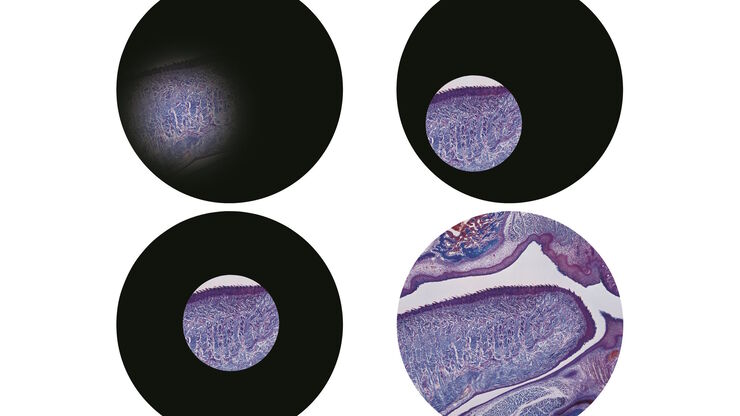Leica DM2500 & DM2500 LED
Aufrechte Mikroskope
Lichtmikroskope
Produkte
Startseite
Leica Microsystems
Leica DM2500 & DM2500 LED Optische Mikroskope
Ergonomische Systeme für Routine- und Forschungsanwendungen
Lesen Sie unsere neuesten Artikel
Phasenkontrast
Mit einem Phasenkontrast-Lichtmikroskop können die Strukturen vieler Arten von biologischen Präparaten mit einem größeren Kontrast betrachtet werden, ohne dass die Probe eingefärbt werden muss.
H&E Staining in Microscopy
If we consider the role of microscopy in pathologists’ daily routines, we often think of the diagnosis. While microscopes indeed play a crucial role at this stage of the pathology lab workflow, they…
How to Benefit from Digital Cytopathology
If you have thought of digital cytopathology as characterized by the digitization of glass slides, this webinar with Dr. Alessandro Caputo from the University Hospital of Salerno, Italy will broaden…
Factors to Consider when Selecting Clinical Microscopes
What matters if you would like to purchase a clinical microscope? Learn how to arrive at the best buying decision from our Science Lab Article.
The Time to Diagnosis is Crucial in Clinical Pathology
Abnormalities in tissues and fluids - that’s what pathologists are looking for when they examine specimens under the microscope. What they see and deduce from their findings is highly influential, as…
DIC
Ein DIC-Mikroskop ist ein Weitfeldmikroskop, bei dem sich zwischen Lichtquelle und Kondensorlinse sowie zwischen Objektiv und Kamerasensor oder Okularen ein Polarisationsfilter und ein…
A Guide to Darkfield Microscopes
A darkfield microscope offers a way to view the structures of many types of biological specimens in greater contrast without the need of stains.
Koehler Illumination: A Brief History and a Practical Set Up in Five Easy Steps
In this article, we will look at the history of the technique of Koehler Illumination in addition to how to adjust the components in five easy steps.
Forensic Detection of Sperm from Sexual Assault Evidence
The impact of modern scientific methods on the analysis of crime scene evidence has dramatically changed many forensic sub-specialties. Arguably one of the most dramatic examples is the impact of…
Fields of Application
Klinische Pathologie
Entdecken Sie, wie Leica Pathologie-Mikroskoplösungen klinische Pathologen bei der Diagnose von Infektionen und Krankheiten in Körperflüssigkeiten und Geweben unterstützen.
Mikroskopie in der Pathologie
Die pathologische Analyse von Proben erfordert manchmal lange Arbeitsstunden an einem Mikroskop. Dies kann für den Benutzer mit körperlichen Beschwerden und Belastungen verbunden sein, was zu einer…
Anatomische Pathologie
Erfahren Sie, wie anatomisch-pathologische Mikroskope von Leica Microsystems effiziente und genaue medizinische Diagnosen unterstützen.
